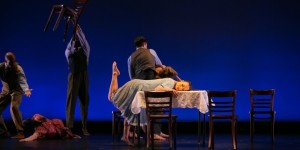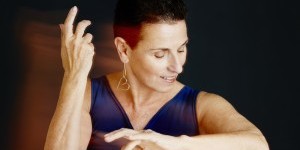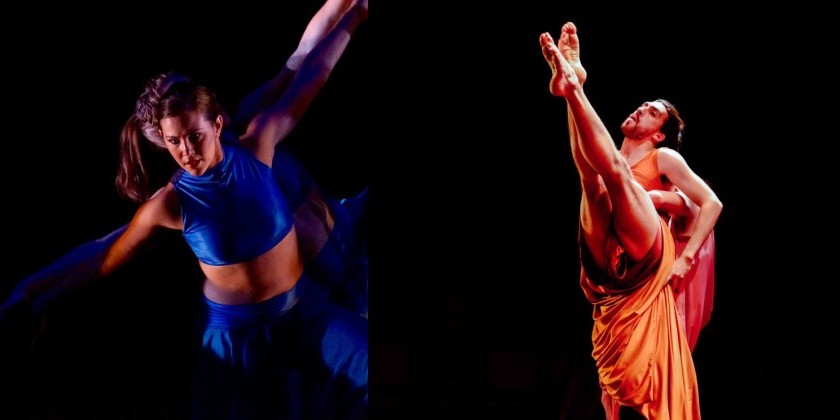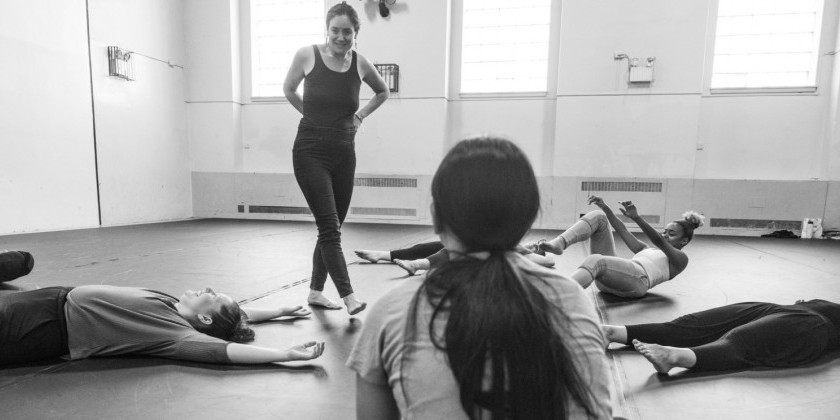IMPRESSIONS: Liberty Dance Festival Presented by Buggé Ballet and Liberty Hall

Featuring:
Inimois Dance, Loretta D. Fois, Carolyn Dorfman Dance, Roxey Ballet Company, General Mischief Dance Theatre, Julia Mayo, Kathak Dance Collective, Ariel Rivka Dance, Sydney B. Wiggins, and sarAika movement collective.
September 24, 2022
On a sun-dappled afternoon fragrant with the scent of herbs and foliage, perhaps only one thing could make the gardens of the Liberty Hall Museum more attractive. That would be the presence of dancers skipping nymph-like among the shrubbery and flowers.
The Liberty Hall Dance Festival is happy to oblige. This annual event, cleverly curated by Nicole Buggé, returned on Saturday, when a varied lineup of performers danced in and around the picturesque gardens attached to this house museum on the Kean University campus, in Union, New Jersey. Ten groups participated, staggering their appearances in five different locations, as the audience traipsed happily from one charming prospect to the next, caressed by soft breezes and hungry for kinetic excitement.

In Emily Smyth Vartarian’s playful Stroll, members of General Mischief Dance Theatre chased one another through the narrow alleys that crossed the Rose Garden. They skipped and gamboled, perched on each other’s backs, and performed low, twirling leaps to the sound of Taiko drumming. Julia Mayo’s Time loop was a dreamlike affair for two lovers. Daniel Mayo and Natasha Rosenberg were drawn together, meeting at the center of the Rose Garden, where his light touch prompted her to turn into a swaying embrace. Their duet reached a peak of intensity in a spinning lift, with Rosenberg’s heels flying. Soon, however, the piece adopted a wistful air, as the couple turned back-to-back apparently dancing with their memories.

The Garden Maze offered a more challenging setting, in which dancers were liable to disappear and then go flashing by half-seen among low hedges. Sydney B. Wiggins’ No Groove Left Behind was a dance of rhythmic ecstasy for three women who gently rocked their hips and shook their heads, twirling and at one point darting out of the maze to frolic on a nearby lawn. The same space became a scene of struggle in You don’t have to love me, just accept me, by choreographers and dancers Sara Pizzi and Aika Takeshima. These two wildcats seemed to battle unseen assailants, dodging, swatting the air, and scrabbling on the ground in a pebbled courtyard. Takeshima also turned on Pizzi, forcing her into a deep backbend and pursuing her, only to assist her later when Pizzi shrank beneath an invisible weight.

All the sunshine in the world would not lighten the mood in Ariel Rivka’s Unorthodox, a dance of desperate anxiety filled with clenching, gripping moves, performed on the open lawn beside the Ice House. Rivka’s four black-clad women wriggled on their backs like commandos, and heaped together in a struggling pile of bodies. Each breakout solo seemed like a fresh nervous breakdown. Well, that’s life. Or maybe not---the serenity of Deepa Devasena’s Kathak solo offered a different perspective. Gently swaying and caressing the air with her hands, Devasena was suddenly caught up in a whirl of rhythm, her skirts and long braid fanning out as she spun. Six dancers with her Kathak Dance Collective then performed a celebratory folk dance skipping with their fingers pinched together, and tossing from side to side. Here all was gaiety, rejoicing, and bright colors.

The Blue Front Porch at the entrance to Liberty Hall makes an ideal platform for oratory, as Loretta D. Fois demonstrated in her madcap solo With only the clothes on our backs. Armed with the facts (and alternative facts) this impassioned lecturer exposed our country’s shameful history of anti-immigrant rhetoric, quoting historic texts, riffling through index cards, and using her podium as a battering ram.

Megan Chu took a more casual approach to politics, idling with her hands in her pockets or skipping along the porch, while a voice-over described a serviceman’s life-altering journey to war and back. Chu’s solo, The honky-tonk, made its point subtly but clearly.

Some dances require a more formal setting, or at least a clean floor to slide on. Carolyn Dorfman’sexplosive homage to bandleader Louis Prima (PRIMA!) is one such piece. Dorfman’s company performed excerpts from this work inside The Wagon Shed, shimmying, prancing, and turning a contemporary jazz vocabulary into TNT. In somber contrast, two members of Roxey Ballet performed an excerpt from Frida Kahlo, a dance whose outsize movements pointed to a life of unbearable pain. As the title character, Christina Holl lunged at a wheelchair, pushing it away. Her partner, dancer and choreographer Giovanni Ravelo, both lifted her on high and lay her on the floor, ultimately dashing himself to the ground beyond her reach.
Buggé, the festival’s curator, has shrewdly balanced her offerings. Such striking juxtapositions of mood and style, however, also remind us that dancers are magicians who take possession of the space they occupy, and can transform any environment.













